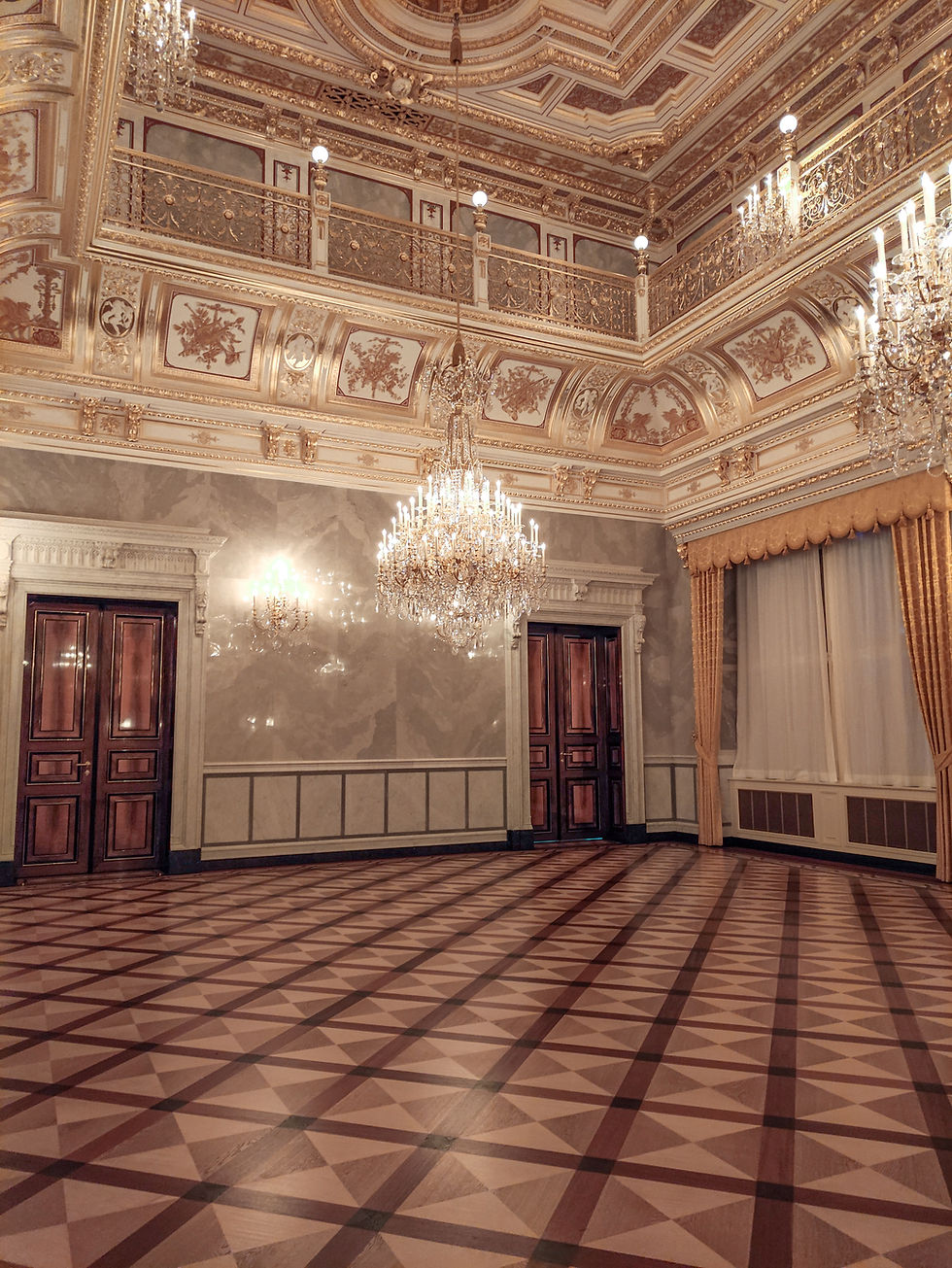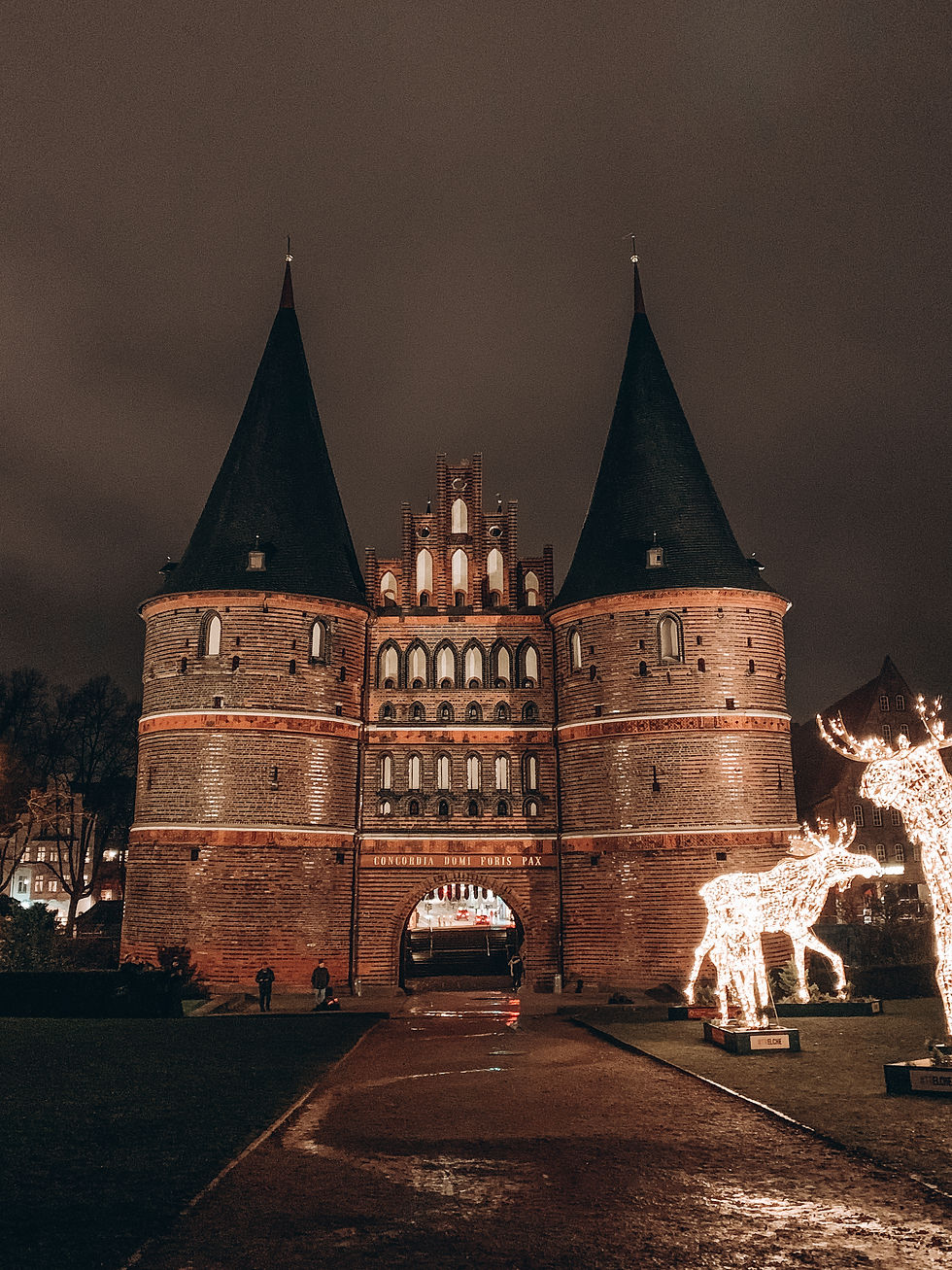Top 10 Things to do in Dresden
- Marissa Matthiesen
- 6. nov. 2023
- 6 min læsning
Opdateret: 13. nov. 2023
In 2022 our annual Christmas Market Trip took us to Dresden, a city I hadn’t yet visited. As a German, the one thing I am uttermost proud of are the German Christmas Markets – we have some of the oldest and most magical markets in the world and people are streaming towards Germany during the month of December in masses, and well, we are one of them. I compounded a list of the top 10 things to do when in Dresden which work equally well during all seasons.

1. Dresden Zwinger
The cityscape of Dresden is shaped by one of the most glamorous buildings I have ever seen. It is less a building but rather acolossal complex deriving from another time. As we were walking the grounds of the Zwinger, I felt like being transferred back in time to the glamorous age of the baroque where clearly no costs were spared; this building complex is truly a work of art. The architectural project began with Augustus the Strong and continued for centuries with additions and transformations being made along with the change of its proprietor. The plans for the extension of the Zwinger were enormous. Enormous to an extent that the plans had to be limited due to lack of finances. Today, the complex houses museums with magnificent exhibitions and my favourite part, the multimedia experience taking you back in time with virtual reality stations and panoramic projections.

2. Frauenkirche
The city of Dresden is full of architectural treasures where the Baroque Protestant Frauenkirche is amongst one of them. Despite having been severely destroyed during WWII, the city managed to rebuild its treasures so that we can cherish and admire them today. The monumental church has a long history, tracing to the 11th century with a Romanesque church being mentioned. With the foundation and the growth of the city the church needed remodelling on several occasions in order toaccommodate the increasing number of visitors. In 1726 the old church was finally demolishedin order to house a bigger version during which period the distinctive dome, the grand organ and were built.During the raids on 13th February 1945, the church collapsed into ruins to finally be rebuilt half a century later in 1993.

3. Green Vault
Entering the Green Vault, a museum inside the Royal Palace, a glittering and shimmering world ofthe finest and largest treasure collection in Europe opened up in front of me. Unfortunately, it is forbidden to take photos inside the Green Vault, so all I have to look back atare my nostalgic memories and this one picture before entering the Green Vault. We have a lot to thank Augustus the Strong for, because not only did he built the Zwinger building complex, but the Green Vault Museum, too. Between the years of 1723 and 1729 Augustus the Strong built the museum containing treasuries like gold, silver, ivory, pearls, diamonds and other precious metals and stones divided into different rooms where each seems to outshine the other. The Green Vault, too, was severely damaged after the air raids in 1945 which led to complete restoration of it; today the historic treasures are shown in two exhibitions, the Historic Green Vault and the New Green Vault.

4. Procession of Princes
A stroll through the historical town of Dresden will undoubtedly lead you to the Procession of Princes, a remarkable display of art and history featuring larger-than-life portraits of former Saxony rulers. A look at the large mural and you will be taken on a journey through the cultural heritage of Dresden. The original was painted between 1871 and 1876 to celebrate the 800th anniversary of the Wettins, a Saxony's ruling family, and was later in 1904 to 1907 replaced by more than 23.000 weatherproof porcelain tiles since the original quickly began to fade; today, it is known as the largest porcelain artwork in the world. The rulers displayed are portraits of margraves, electors, dukes and kings which date back to the year of 1127 and into the 20th century with the last depiction being the George of Saxony in 1904.

5. Royal Palace
The treasures inside the Royal Palace in Dresden are many. Once built as a residential castle to house the electors and kings of Saxony, it’s purpose now serves as a museum complex for the Historic and New Green Vault, the Dresden Armory, the Turkish Chamber and many more exhibitions. The Royal Palace is one of the oldest buildings in Dresden, beginning with its first mentions in the 14th century as a castle complex. It has since then been developed in the 15th century but again destroyed by a fire in 1701. Once again, Augustus the Strong came to the rescue of this building and was then reconstructed. The severe damages after the air raids affected also the Royal Palace, burning it down to its foundations where most of its valuable interior furnishings were lost. In 1985 the reconstruction began turning it back into the grand treasure it once was.

6. Hofkirche
The beautiful city of Dresden is boasting of impressive and historical buildings, the Cathedral being one of them. It is mere to impossible to walk through the city with the Cathedral being unseen since this building is nothing short of an impressive, historical landmark. Along with the other historical buildings in Dresden, the church was severely damaged after the air raids on 13thFebruary 1945. The church was built in the 18th century in the years between 1739 and 1755 in Baroque-style. In the 18th century, Saxony was a predominantly Protestant state which left the people in concernwhen Augustus the Strong was forced to convert into Catholicism in order to claim the Polish crown which led to his son being born as a Catholic, too. In all secrecy his son had planned to build a Catholic church being the present Cathedral, Hofkirche.

7. Gemäldegalerie Alter Meister
There are so many museums inside the Zwinger which arouse my curiosity that I would have wanted to see them all. But with nothing more than three days in Dresden I needed to make a tough choice and decided for the multimedia experience and the “Gemäldegalerie Alte Meister”, the state art collection containing around 700 masterpieces from the 15th to the 18th century. As I wandered around the museum admiring the artwork, I couldn’t help but admire the architecture, too. What a divine place to exhibit historical masterpieces where the architecture equals the art collection.

8. Semperopera
By this time, I have probably mentioned a handful of times my great love for all things old-world, which also includes the Semperoper. The Semperoper is Dresden’s famous opera house which today stands as impressive as on the day the building was completed in 1841. I can only imagine the inside to be as beautiful and even more impressive than the outside. Sadly, we never managed to visit the inside of the opera, so I’ll save this for my next visit. After a devastating fire in 1869, the opera house had to be rebuilt with its completion in 1878. As with the majority of the buildings in Dresden, the opera house was largely destroyed in the bombing in 1945 and a subsequent firestorm, leaving nothing but the exterior shell standing. 40 years later, the reconstruction of the opera house was completed on the 13th of February 1985 with an identical appearance to the original.

9. Pfunds Molkerei
Pfund’s Dairy was an extraordinary attraction to have on my must-see list for Dresden. But the reason was simple, I am a lover of all things old-world-charm (sometimes I wonder whether I was born in the wrong century) so naturally I needed to see this place which was recommended by so many. The dairy shop is considered to be the most beautiful of its kind in the world and did achieve this title already in 1910. The interior of the dairy boutique is beautifully designed with 250 sqm of hand-painted tiles on walls, floors and the sales counter with motifs from the dairy industry, mythical animals and floral elements in the neo-renaissance style. The dairy shop opened its doors in 1880 by the hand of two brothers who had a vision of supplying the city of Dresden with fresh milk. Today, the dairy boutique is offering a wide variety of cheese specialties and regional products.

10. Kunsthofpassage
After spending two days exploring the old town, I felt the urge to see what the new part of the town had to offer laying just across the river. Sundays in Germany are quiet and peaceful and with the majority ofthe stores being closed we enjoyed walking around the artful district called “Kunsthofpassage”. Wandering around from backyard to backyard was a wonderful experience to admire the artful expressions on the buildings. Each backyard has something different to offer and exploring the maze of backyards and buildings never got boring. The arty shops inside the backyards selling interesting, hand-crafted goods were closed with exception of a few which we gladly entered and explored.A district that once housed neutral, unused buildings is today a lively hub for Dresden’s artists, students and art lovers.






Kommentarer